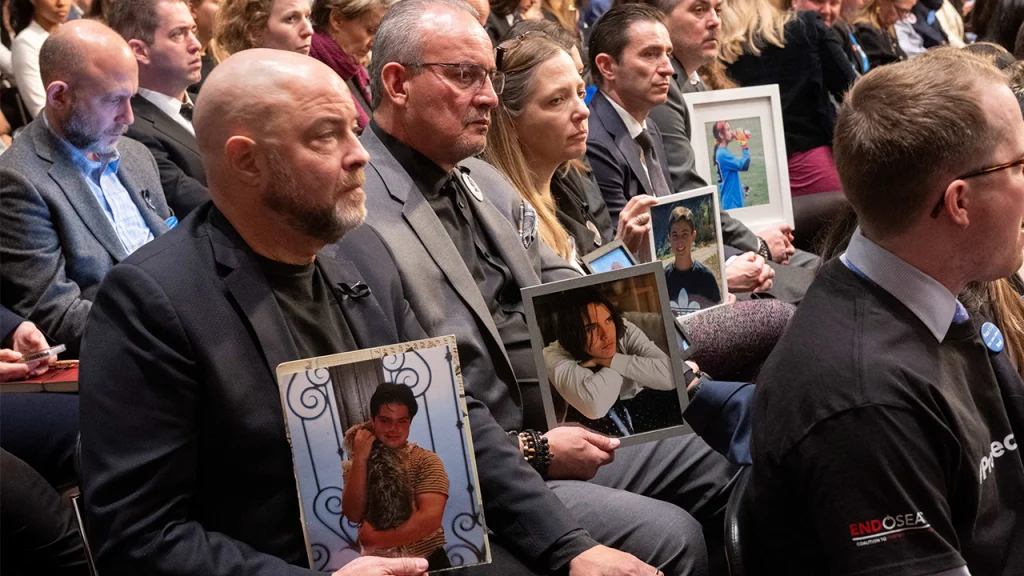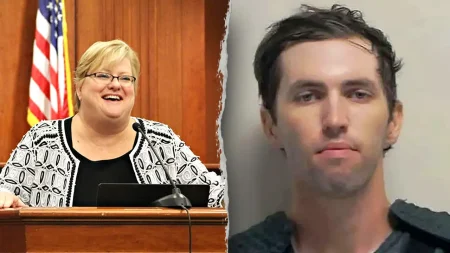The Hidden Crisis: Financial Sextortion Targeting America’s Teenage Boys
The National Center for Missing & Exploited Children (NCMEC) is witnessing an alarming surge in financial sextortion schemes targeting teenage boys, a crisis that escalated dramatically following the COVID-19 pandemic. Callahan Walsh, son of child safety pioneers John and Revé Walsh, explains that this represents a fundamental shift in predatory behavior online. Where once exploitation was primarily motivated by sexual gratification, it has evolved into a criminal enterprise driven by financial gain. These predators, often operating from overseas, pose as peers on gaming platforms and social media, manipulating vulnerable teens into sharing explicit images. The moment a photo is shared, relentless blackmail begins, with threats to expose the content to family, friends, and classmates unless payment is made. The psychological impact is devastating, with some victims seeing no way out except suicide. “The threat is real and it’s relentless,” Walsh emphasizes, highlighting how these criminal operations have weaponized shame and fear with tragic effectiveness.
The scale of this crisis is staggering and demands immediate attention from lawmakers, tech companies, and parents alike. During a recent Senate Judiciary Committee hearing, FBI Director Kash Patel cited data showing a 1,325% increase in generative AI-facilitated sextortion and child sexual abuse. Senator Katie Britt of Alabama, herself raising teenagers, spoke of heartbroken parents whose children died by suicide after being blackmailed by online predators. The FBI has responded aggressively, arresting 1,500 child predators and 300 human traffickers in the past year while rescuing 4,700 children. In a single month, operations resulted in 400 arrests of individuals targeting minors. Yet these impressive numbers barely scratch the surface of a problem that continues to grow exponentially. The NCMEC’s CyberTipline received over 36 million reports of suspected child sexual exploitation in 2023 alone, a volume that overwhelms current resources and reflects only a fraction of actual incidents occurring across digital platforms frequented by young people.
Founded after the abduction and murder of 6-year-old Adam Walsh in 1981, NCMEC has evolved from humble beginnings with “a card table and a landline” into the nation’s foremost organization combating child exploitation and abduction. Now managing approximately 30,000 active missing-child cases, the center has helped recover more than 480,000 missing children since its inception. This remarkable achievement stems from NCMEC’s embrace of cutting-edge technology and analytical tools. Digital billboards, social media campaigns, genetic genealogy, and real-time data analysis have revolutionized how missing children are located. “DNA is the fingerprint of the 21st century,” Walsh notes, explaining how scientific advances have transformed investigations that once relied primarily on physical evidence and eyewitness accounts. The organization’s evolution mirrors the changing landscape of threats against children, adapting continuously to address new vectors of exploitation while maintaining its core mission of child protection.
Beyond technological solutions, NCMEC works tirelessly to combat harmful misconceptions that impede child recovery efforts. Walsh emphasizes that contrary to popular belief, there is no required waiting period before reporting a missing child. “You do not have to wait 24 hours to report a missing child. Call law enforcement immediately,” he stresses, noting that precious time is often lost due to this persistent myth. He also challenges the dismissive labeling of young people as “runaways,” pointing out that this designation often masks cases of grooming, trafficking, and exploitation. Many children categorized as runaways are actually in the custody of predators who have manipulated them through calculated psychological tactics. By reframing public understanding of these cases, NCMEC hopes to ensure that all missing children receive the urgent attention and resources their situations demand, regardless of the circumstances of their disappearance.
While law enforcement has intensified efforts to combat exploitation, FBI Director Patel acknowledges that government agencies alone cannot solve this crisis. “We need help from social media companies. We need help from the private sector and the internet service providers that allow this generative AI to be hosted on their platforms,” he testified. This call for collaboration echoes Walsh’s sentiment that “we need the tech industry and Congress to keep the lights on.” The fight against child exploitation requires a comprehensive approach involving legislation, platform accountability, parental education, and technological safeguards. Senator Britt has pledged to work with colleagues to develop new tools and frameworks to combat sextortion specifically. Meanwhile, organizations like NCMEC operate at the intersection of these efforts, analyzing reports, supporting law enforcement, and advocating for stronger protections across all domains where children interact online.
For Callahan Walsh, this work remains deeply personal. His brother Adam’s legacy continues to drive NCMEC’s mission more than four decades after his murder changed how America approaches child safety. “We always said we need to make sure Adam didn’t die in vain. And if his song is to continue, we must do the singing,” Walsh reflects poignantly. When asked about his ultimate goal, Walsh expresses a bittersweet aspiration: “I would love to say every missing child’s been found. There’s no more missing children. And we’ve eradicated exploitation online. That’s our goal. We want to put ourselves out of a job.” Until that day arrives, NCMEC remains vigilant, evolving its approaches to meet new threats while holding fast to the principle that “every child deserves a safe childhood.” For families concerned about these issues or needing to report potential exploitation, NCMEC can be reached through their website at missingkids.org or by calling 1-800-THE-LOST, providing a critical lifeline in moments of crisis and uncertainty.










